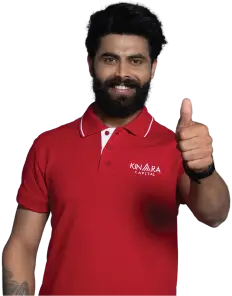
In recent years, India has made rapid progress toward open banking. This headway is apparent in government initiatives, bank launches of scalable open banking projects, neobank traction, and the funding and scaling-up of many banking-as-a-service platforms. India has the second-fastest digitising economy among the world’s 17 leading economies. The government expects the digital economy to generate $1 trillion in value by 2025, with the majority of the opportunities coming from new digital ecosystems.
At the heart of these ambitious plans is the India Stack, which refers to a set of APIs that lets governments, businesses, startups, and developers in the country use a unique digital infrastructure to speed digital transactions and data-led operations. India Stack facilitating the advent of open banking application programming interfaces (API) ecosystem in India, which has the potential to revolutionize the financial landscape. Open banking is a banking practice that gives third-party payment services and other financial service providers open access to consumer banking, transactions, and other financial data from banks and non-banking financial institutions through APIs. Open banking promotes interoperability and networking between banking information and service providers, creating a smooth user experience while networking all user’s accounts. Let’s explore how this framework can help revolutionize the way the financial sector in India operates.
India Stack is known as the heart of open banking in India. India Stack, which uses Aadhaar as its foundational layer, integrates eKYC, an Aadhaar-enabled payments system, and UPI. India Stack is positioned to lead the country’s financial services industry toward presence-less, paperless, and cashless service delivery. Armed with cutting-edge digital capabilities, India Stack, in association with the Jan Dhan Yojana bank account, Aadhaar, and mobile number, has helped bring digital banking to India’s most remote areas, where banks were otherwise unable to provide their services.
The introduction of the RBI’s Account Aggregator structure is the next key step. This paradigm facilitates data sharing among services, but only with user consent. Its goal is to make it easier for financial services providers to obtain transactional and banking data from users in order to optimise product offerings for their clients. Major Indian banks are currently investigating the open banking API framework use cases. Once implemented, the framework will allow for seamless data sharing among financial service providers, enabling secure and convenient access to these services for all Indians.
Open banking APIs have started being implemented in various aspects of financial services ecosystems across the world, and the emerging use cases look promising. Here are a few of the ways that open banking can transform processes and service delivery in India:
Open banking provides secure APIs for gaining access to financial account data, which benefits all parties including banks, account holders, and fintech. With open banking, banks and financial service providers have better control and visibility into third parties who access their client’s financial data and the purposes for which the data is utilised. This can be used for streamlining account aggregation and facilitating centralised transactions to ease various processes for customers.
Financial documents and data from external credit and bank accounts can bridge the gap between banking and buying, revealing the potential for banks and financial service providers to engage customers proactively. Customer life stages, psychographics, brand loyalty, and other factors all contribute to the creation of a personalised experience.
Wealth management with open banking capabilities improves customer service. Allowing consumers to retrieve data from external accounts and undertaking a digital KYC procedure simplifies onboarding for new and existing customers wishing to use the bank’s or service provider’s financial planning facilities.
Wealth management with open banking capabilities improves customer service. Allowing consumers to retrieve data from external accounts and undertaking a digital KYC procedure simplifies onboarding for new and existing customers wishing to use the bank’s or service provider’s financial planning facilities.
Wealth management with open banking capabilities improves customer service. Allowing consumers to retrieve data from external accounts and undertaking a digital KYC procedure simplifies onboarding for new and existing customers wishing to use the bank’s or service provider’s financial planning facilities.
The necessity for manual entry by the user is eliminated with open banking, digital ID verification, and cross-referencing with external accounts. This expedites account opening as well as activities such as loan application and distribution.This is especially beneficial for last-mile customers, because it boosts accessibility and ease of on-boarding.
As open banking adoption spreads across regions, it is becoming evident that effective customer authentication will remain a critical element of the open banking API ecosystem. It must be a top priority for both banks and third-party service providers. Establishing and retaining trust may be challenging for some third-party providers since they are not always as security-savvy as banks and financial service providers.
They risk making authentication too simple or too difficult. India can learn from the experiences of other countries in this context and ensure that robust but simple securitization processes are imposed during deployment to protect client security and privacy. Some of the possible risks are:
Major Indian banks are now looking at utilising open banking APIs to keep up with digital banking and Fintech services. Kinara Capital, a leading Fintech serving MSME borrowers, has already taken several initiatives in this direction, such as leveraging API, to improve the loan process and deliver a seamless customer experience. Kinara’s customer app, myKinara,allows customers to apply for loans through an end-to-end digital process from their device, in a secure manner. This is expanding the company’s reach and helping an increasingly larger segment of MSME borrowers access the capital they need. If you are an MSME business owner, you can check your eligibility for a collateral-free business loan in less than a minute with the myKinara digital app.
